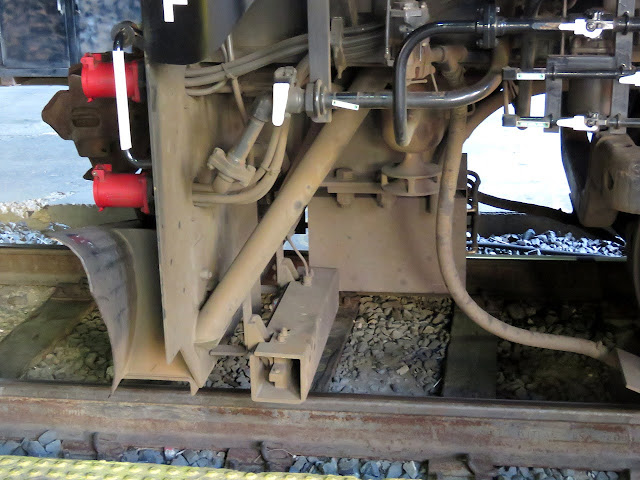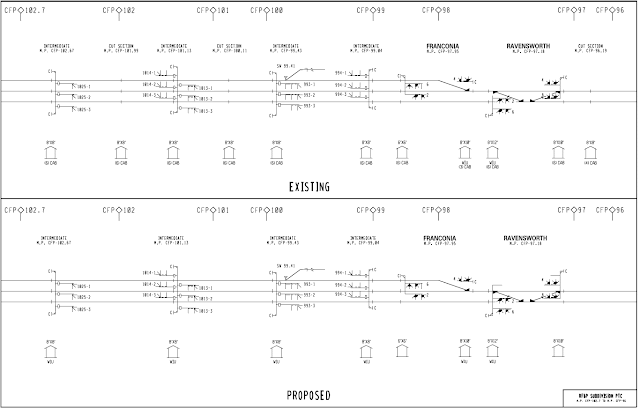The FRA has granted CSX's December 2021 request to discontinue use of cab signals on the former Richmond, Fredericksburg and Potomac route between Washington, DC and Richmond, VA. Several months into a full blown rail safety panic it seems a bit tone deaf for the FRA to approve the removal of a well proven, reliable and completely failsafe signaling mechanism for good old fashioned waysides with a PTC safety overlay, but what do I know. Although we have seen similar cab signal removals by Union Pacific and BNSF, the RF&P cab signals had actually been integrated with the ETMS PTC system in a similar fashion to Norfolk Southern's Conrail territory. This makes CSX's post facto decision to ditch them an unfortunate surprise especially since the railroad choose to extend the northern limits of its RF&P CSS territory to CP-ANACOSTIA within the last decade.
The motivation for the move is two fold. First, CSX doesn't have to worry about maintaining a large pool of CSS equipped locomotives to run over a single subdivision as well as performing a required CSS test before locomotives run over said subdivision. Likewise Virginia Railway Express no longer has to worry about CSS equipment or tests for its fleet and Amtrak can likely get away with neglecting the CSS on its Washington based diesel fleets.
 |
| Cab Signal pickup on a VRE MP36 |
The second motivation is that despite the RF&P being "like" the successful PRR/Conrail system, it did have a major shortcoming wherein Medium Clear and Medium Approach signals would draw a Restricting (20mph) cab signal within interlocking limits instead of Approach Medium (45mph) or Approach (30mph) respectively. This relay era cost saving measure that was never rectified and is likely the basis for some of the claims that the RF&P CSS does not play well with the ETMS PTC system that attempts to rely on the presence of cab signal codes for movement authority..
Like many FRA applications it may be a number of years for CSX to follow through on its plans. Unlike Union Pacific and BNSF that could literally wave away their ATS ATC and ACS systems at the stroke of midnight, CSX actually integrated the RF&P Sub CSS into its PTC solution with ETMS wayside interface units located only at interlockings to enforce the positive stop. Between interlockings the presence or absence of CSS codes would inform ETMS as to the enforcement of restricted speed situations such as an occupied block or open switch. CSX will need to install additional ETMS wayside interfaces at every automatic block signal location and every hand operated switch. Unless this work had already started it is likely to take a year or more before the CSS can be completely decommissioned.
As I have stated numerous times before, use of coded track circuits are both more reliable and provide a greater level of safety than wireless systems. Since the start of 2023 there have been at least two serious ETMS PTC outages to affect both Amtrak and MARC resulting in the cancellation of one or more days of scheduled service. CSS with ATC provides redundant speed control functionality that is completely independent of ETMS that can allow for (in a CYA sense) continued operation during a PTC outage. from an operations point of view CSS allows for mid-block signal upgrades and also provides for an easy path to 110mph service on the RF&P via the eventual extension of Rule 562+ACSES south from the NEC. Removal of the intermediate CSS code change points will significantly raise the costs of restoring CSS or just expanding the number of signal blocks to increase capacity.
For all we know CSX might still change its mind as the current rail safety panic continues to unfold and increases the political liability of removing safety systems to save a buck. Amtrak's plans to extend Rule 562 into the First Street tunnels further questions the cost savings if VRE and Amtrak diesels retain the need to be cab signal equipped for operation into Washington Union Station. In a further bit of irony CSX's purchase of Guilford Rail Service saddled it with additional Rule 562/ACSES territory that it will be unable to shake due to the MBTA.
It will be interesting to see what happens to the remaining stub of CSS territory on the Philly Sub between CP-BELMONT and CP-PENROSE that was part of the old PRR West Philadelphia Elevated line to the South Philly freight yards. Leading locomotives do not need to be CSS equipped, but the system is still in service with all of the associated "costs".





No comments:
Post a Comment